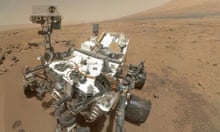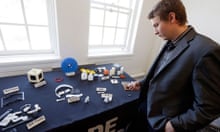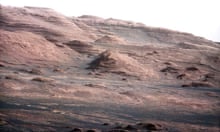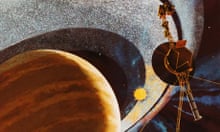Water has been discovered in the fine-grained soil on the surface of Mars, which could be a useful resource for future human missions to the red planet, according to measurements made by Nasa's Curiosity rover.
Each cubic foot of Martian soil contains around two pints of liquid water, though the molecules are not freely accessible, but rather bound to other minerals in the soil.
The Curiosity rover has been on Mars since August 2012, landing in an area near the equator of the planet known as Gale Crater. Its target is to circle and climb Mount Sharp, which lies at the centre of the crater, a five-kilometre-high mountain of layered rock that will help scientists unravel the history of the planet.
On Thursday Nasa scientists published a series of five papers in the journal Science, which detail the experiments carried out by the various scientific instruments aboard Curiosity in its first four months on the martian surface. Though highlights from the year-long mission have been released at conferences and Nasa press conferences, these are the first set of formal, peer-reviewed results from the Curiosity mission.
"We tend to think of Mars as this dry place – to find water fairly easy to get out of the soil at the surface was exciting to me," said Laurie Leshin, dean of science at Rensselaer Polytechnic Institute and lead author on the Science paper which confirmed the existence of water in the soil. "If you took about a cubic foot of the dirt and heated it up, you'd get a couple of pints of water out of that – a couple of water bottles' worth that you would take to the gym."
About 2% of the soil, by weight, was water. Curiosity made the measurement by scooping up a sample of the Martian dirt under its wheels, sieving it and dropping tiny samples into an oven in its belly, an instrument called Sample Analysis at Mars. "We heat [the soil] up to 835C and drive off all the volatiles and measure them," said Leshin. "We have a very sensitive way to sniff those and we can detect the water and other things that are released."
Aside from water, the heated soil released sulphur dioxide, carbon dioxide and oxygen as the various minerals within it were decomposed as they warmed up.
One of Curiosity's main missions is to look for signs of habitability on Mars, places where life might once have existed. "The rocks and minerals are a record of the processes that have occurred and [Curiosity is] trying to figure out those environments that were around and to see if they were habitable," said Peter Grindrod, a planetary scientist at University College London who was not involved in the analyses of Curiosity data.
Flowing water is once thought to have been abundant on the surface of Mars, but it has now all but disappeared. The only direct sources of water found so far have been as ice at the poles of the planet.
The other papers included x-ray diffraction images of the soil in order to work out the crystalline structure of the minerals on the Martian surface and analysis of a volcanic rock called "Jake_M", which is named after a Nasa engineer. The analysis showed that the rock was similar to a type on Earth known as a mugearite, which is typically found on ocean islands and in rift zones.
Grindrod said that the latest results published by the Nasa team were just the start of the scientific insights that would come from Mars in the next few years. "It's the first flexing of Curiosity's analytical muscles," he said. "Curiosity spent a long time checking out the engineering, instruments and procedures it was going to use – these papers cover just that engineering period. The targets here weren't chosen because of their science goals as such but as good targets to test out the instruments."
Leshin said that, as well as the excitement of exploring a new world for the first time, the increasingly detailed analysis of the Martian surface would be critical information for planning human missions. As well as the water discovery, analysis of the soil has also shown, for example, the presence of a type of chemical called a perchlorate, which is can be toxic to people. "It's only there at a 0.5% level in the soil but it impedes thyroid function," she said. "If humans are there and are coming into contact with fine-grained dust, we have to think about how we live with that hazard. To me it's a good connection between the science we do and the future human exploration of Mars."
She added: "I do think it's inevitable that we'll send people there and so let's do its as smartly as we can. Let's get as smart as we can before we go."








Comments (…)
Sign in or create your Guardian account to join the discussion